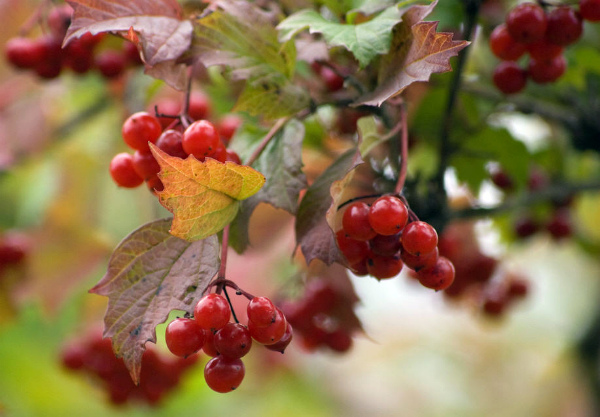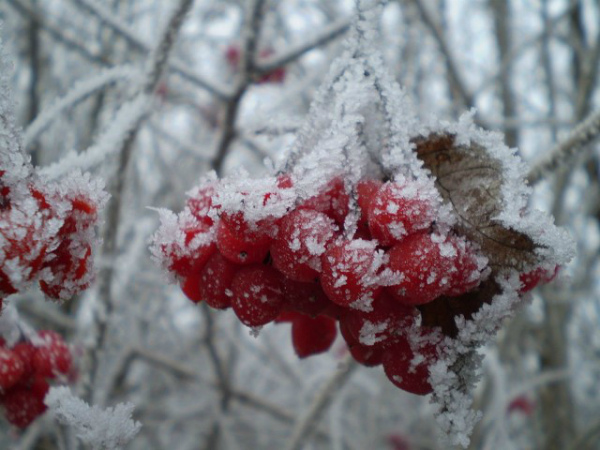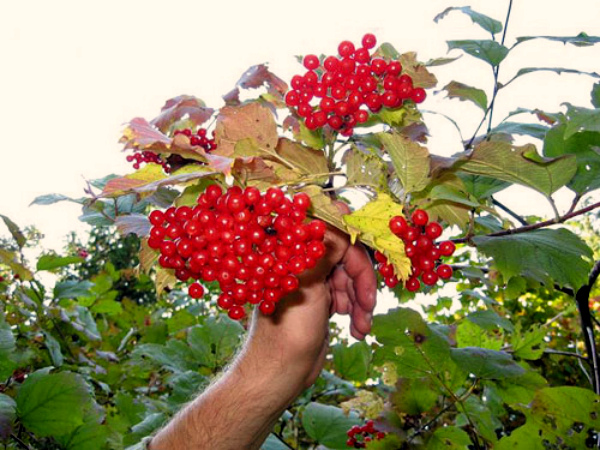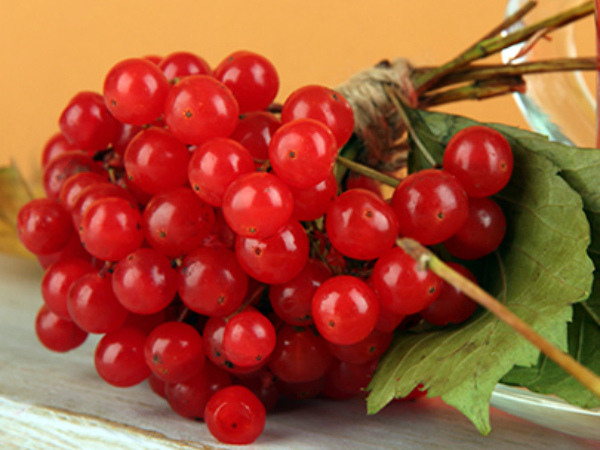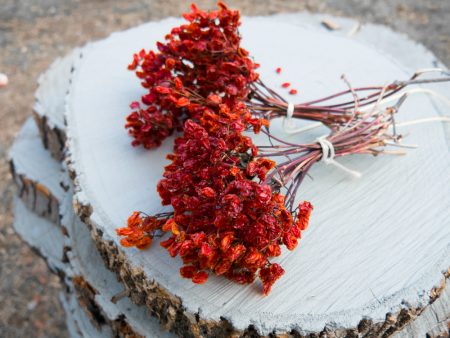How and when to collect viburnum and how to store it correctly
Content
Description of the berry
An upright sprawling shrub that grows from 2 to 4 m tall, loves humid, slightly shaded places, often grows along river banks. The elegant green of the three- or five-lobed leaves stands out beautifully against the grayish-brown branches. In May - June, the bush is covered with snow-white umbrellas of flowers that attract insects with their honey aroma, and August colors the berries red.
More than 150 species and varieties of viburnum are known. Among them there are also completely devoid of bitterness, but the only species is considered medicinal - the common viburnum, the same one with bitter fruits and bones shaped like hearts.
The flowers, bark and berries of this fabulous bush are used for medicinal purposes. The most widely known are the beneficial properties of berries. They contain many vitamins. Moreover, vitamin C, which is in the berries of red viburnum twice as much as in lemons. In combination with iron, vitamin C is perfectly absorbed, therefore they are recommended for anemia with a lack of iron. Vitamins P, A, E, K, carotene, viburnin glycoside, which gives bitterness, tannins, potassium, calcium, magnesium, organic acids, including valerian, this is an explanation of the tremendous benefits of viburnum for the body.
Kalina has a general healing effect on the body, restores strength after an illness, increases immunity, gently soothes, having a slight sedative effect. The use of berries, their infusions or juice has a beneficial effect on the purity of blood vessels, making them elastic, and on the entire cardiovascular system. The diuretic and choleretic properties of berries help get rid of edema, remove excess fluid from the body, improve the functioning of the kidneys, liver, gallbladder, urinary and biliary tract.
Kalina helps to fight hypertension, nervous irritability, hysterical and neurasthenic states. It lowers blood pressure, improves sleep, relieves spasms of blood vessels and soft muscles. It is used to increase hemoglobin and general blood count, to stop internal bleeding, and to increase blood clotting.
It is difficult to overestimate the help of viburnum for colds. The beneficial properties of viburnum berries and honey are especially well combined. It is this duo that will help cure diseases of the throat and upper respiratory tract.
Usually viburnum is advised to start using in the fall, immediately after its ripening, and continue to do so until the end of winter in order to support the body with vitamins just when it is most important.
But such an abundance of qualities can hurt some people. Very rarely, but still there is an allergy to viburnum (honey is a stronger allergen). For hypotonic patients, frequent use of berries threatens to faint.Since viburnum affects the density of blood, it should be used with extreme caution by people with increased clotting or prone to blood clots. Viburnum helps to increase the secretion of gastric juice, therefore, with gastritis and ulcers with high acidity, it should be used very carefully. It is undesirable for gout and urolithiasis because of the purine that it contains.
If you want to strengthen immunity or just support the body with vitamins during colds, if you have the above contraindications, you do not need to consume viburnum in large quantities or for a long time. Caution and moderation have never harmed anyone, especially when it comes to treatment.
Video "Kalina: useful properties"
Viburnum berries have been successfully used for a long time for the prevention and treatment of various ailments. Details in the video.
Harvesting time
It is believed that the technical maturity of viburnum occurs when the berries acquire an even bright red color without green streaks or spots. This period begins in August in the southern regions, and by the end of September or mid-October, the entire viburnum of the middle band already reaches full ripeness. This is considered the peak of its juiciness and usefulness, but many do not like the bitter taste. After the first frost, the bitterness decreases, but the beneficial properties do not become weaker. By this time, birds are hovering around the bushes with bright red berries and red, yellow, green thinned leaves.
You can start picking berries from the moment when the red color displaces all the others. Usually they rush to collect them if they are afraid that the birds will peck everything. If there is no such fear, then it is quite possible to leave the berries until the cold weather, this will make them more delicious. They will not become less useful even when snow falls and winter weather is stable, the berries just wrinkle, begin to dry, they will lose their presentation, but not medicinal properties.
Cleaning technology
It is best to harvest on twigs, at least on the stalks. This will protect the berries from injury and keep them fresh for a long time. If you need to collect berries for future use, then it is best to carefully cut off with scissors or pruners along with twigs, it is not in vain that they are sold as umbrellas tied in bunches. Such branches with clusters of berries can be carried in any container (basket, bucket, bag), the skin of the fruit is strong enough not to burst during transportation. But if you pick individual berries, then the skin will certainly break, and the juice will flow out.
It is better to bring whole and unharmed berries home on twigs (or at least on the stalks), wash, and only then pick them off and prepare dishes or drinks from them. When long fresh storage is planned, then only the branches need to be cut off - then it is easy to hang them in small bouquets with fruits down.
Storing berries
Such bouquets with bright whole fruits can be hung in a cool room - basement, attic, balcony, in order to pick off the right amount of berries for tea, compote, jelly, fruit drink or pie as needed. And the rest will hang beautifully, waiting in the wings for several months.
In a warm apartment, the berries wrinkle and dry out. Moisture and heat can be a disservice - the berries can become moldy or start to rot. Therefore, in the absence of an unheated room, the berries are stored in the refrigerator. You can put the brushes in a loosely closed bag on one of the lower shelves, or you can freeze them.
For freezing, berries are usually carefully cut off or the stalks are left, washed (not everyone considers it necessary), dried, placed in the freezer, stirring occasionally so that the berries do not freeze together. After freezing, when they have become hard and stiff to the touch, they are placed in a convenient container - bags or vessels, tightly closed and left in the freezer.
Viburnum is often dried using special drying chambers or conventional ovens.Berries with stalks are laid in a thin layer and kept at a temperature of 50-60 degrees; it is better to keep the oven door open to ensure air circulation. As soon as all the berries have become wrinkled, they can be removed from the oven, cooled, laid out in glass jars. Some people simply dry the fruits in the fresh air, stirring. This method will take more time, in addition, you need to hide trays of berries from birds or insects, watch them, stir often.
The berries are ground with sugar or honey (sugar is taken twice as much as viburnum). To do this, they are crushed using a sieve, meat grinder or blender, then the jar with the resulting product is stored in the refrigerator. Squeeze the juice, mix it with the same amount of sugar and also keep it in the cold.
Useful fruits are used to make jelly, jam, marshmallow, wine, and liqueur. From waste after juice production, you can make viburnum oil by pouring the cake passed through a meat grinder with four parts of sunflower or olive oil and leaving it for 3 weeks in a dark place. Then the cake is squeezed out, removed, the oil is bottled, used as sea buckthorn oil.
Everyone knows about the benefits of apple cider vinegar, but our grandmothers made vinegar from viburnum, which we almost forgot. It is made in a very similar way: half a kilogram of berries is covered with a glass of sugar, poured with two liters of water and insisted for about two months. For the first week, the mixture requires attention - it is stirred every other day, and then left to infuse alone. The finished vinegar becomes crystal clear.
There are many ways to preserve viburnum for the winter, but it must be remembered that mechanical or heat treatment reduces the degree of usefulness.
Video "Recipe for harvesting viburnum juice for the winter"
In this video, the author shares the method of harvesting viburnum juice for the winter, which his great-grandmother gave him.


